Maintaining a lush green lawn is not an easy job. First, you have to spend your precious time and hard-earned cash to create a lush green lawn. Then, if you want to keep your yard all tidied up, you will have to get your hands and feet dirty now and again.
However, the job becomes more challenging when dealing with standing water, muddy patches, and a soggy lawn. Muddy yard can especially be annoying if you have kids or pets. Mud can easily hitch a ride on their feet and ruin your floors, carpets, and indoors.
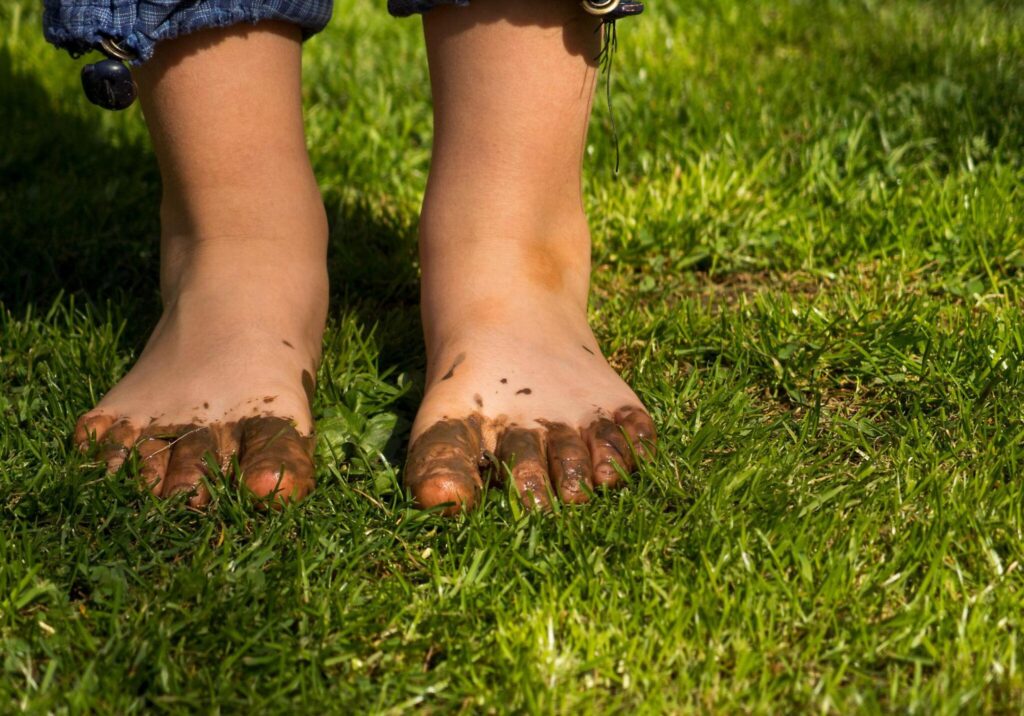
Compacted soil, poor drainage system, and constantly wet conditions can ultimately form a muddy lawn.
No one wants to deal with muddy yards, but it is a problem that many of us have. Not only do the muddy lawns look ugly, but they can also damage the grass, making it prone to fungal infections and pests. In addition, if you do not fix a muddy yard in time, the problem can escalate. In the long run, it can lead to the flooding of the house, especially when the home is on the lower side of the wet yard.
However, do not worry. We have got you covered! In this article, we will look at some of the most common reasons behind a soggy yard or a muddy backyard. Also, we will explore the most effective muddy yard solutions to help you out. Happy reading!
Common Causes of Muddy and Wet Yards
1. Poor Drainage and Landscape Design
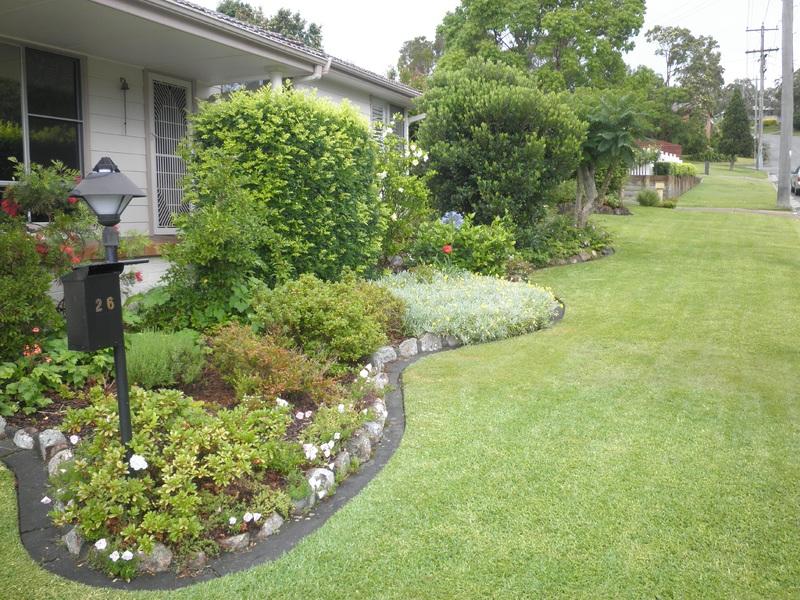
A carefully planned landscape design can also improve the soil’s drainage.
When the architect of your home has put together a landscape plan without keeping the natural order of land around your house into account, he may have unintentionally caused a drainage problem, and you should immediately ask for a refund on your money!
Now, no matter how careful you are and how little water you provide to your plants, there will always be drainage problems in and around your lawn. Similarly, suppose you carelessly place flower beds in your garden or yard. In that case, you risk obstructing the natural flow of water, which will also create drainage issues as well.
However, if you do not have a design problem and still have excess water standing on your lawn, it might be due to an uneven soil surface or a broken drainage system. In most cases, it is a blocked drainage ditch or a drainage pipe that’s causing the problem. Locate it, and you have already fixed your lawn!
RELATED: 11 Outdoor Foliage Plants To Arrange Your Garden Like A Professional Landscape Designer
2. Dog Trails

Muddy spots created by dogs are usually easier to fix.
Unlike us, dogs do not plan and prepare for their outdoor walks. Instead, they usually jump around and take the quickest route from one place to another.
So, if you have a lawn and some dogs, the chances are that the dogs will create their own trails around the yard. Sometimes the tracks made by eager and active dogs connect muddy areas of your lawn with the green grass.
The active dogs can also connect a wet area of your lawn with a low-lying area, creating mud. However, a muddy yard created by dogs is not something you should be worried about. It is easier to fix and certainly less damaging than the muddy garden created by flooding.
3. Rising Water Levels
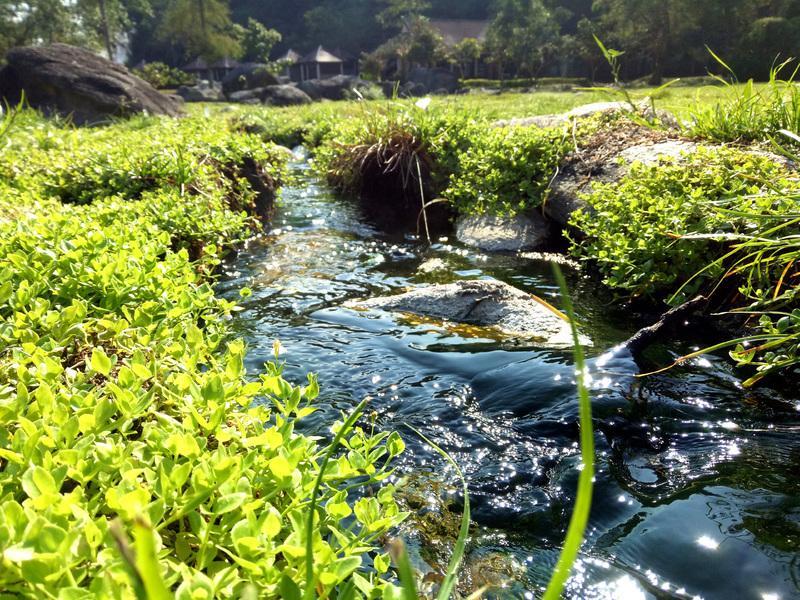
There is no permanent solution for a muddy lawn, if it is due to rising water levels in your area.
If you live near a water body or source of flowing water such as a river, a stream or a pond and you notice the lawn soil is becoming wet. In that case, the chances are that the water levels are rising in your area.
A muddy lawn created like this is usually very hard to fix. There is only so much that you can do to mitigate the effects of a giant water body near your home. However, before you go ahead and blame it all on a river near your home, be sure to rule out poor drainage and soil compaction, which could also be the reason behind a muddy yard.
Badly graded land is another reason why water may be gathering in unusual locations around your yard. If you are having difficulty understanding this concept, think of potholes that form on roads. The “Potholes” created in your yard are full of water, creating swampy soil.
RELATED: Common Lawn Weeds With White Flowers (And How To Get Rid Of Them?)
4. Poor Elevation
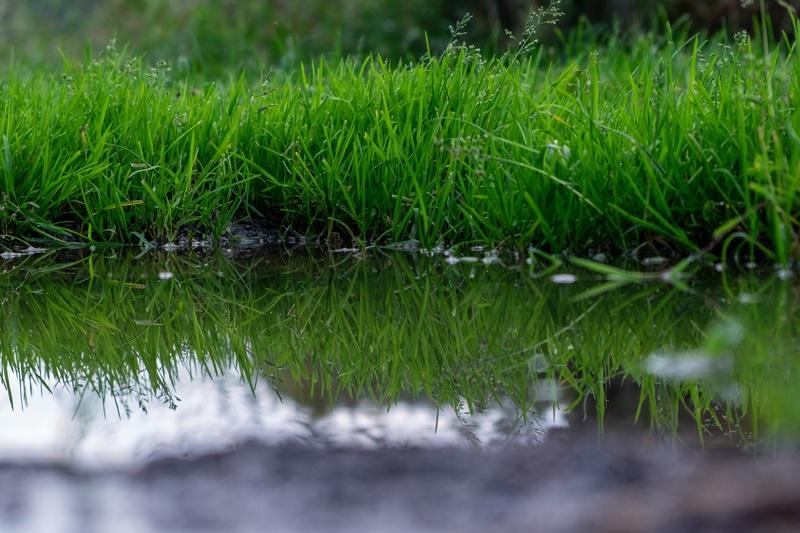
The poor elevation is to blame if the soil is well-aerated and still water accumulates in your yard.
If you have seen water accumulating near the foundations of your home, it is the poor elevation that you need to blame. If left unchecked, it can wreak havoc on your home and may even completely destroy the foundations. However, be sure to check the soil is adequately aerated before blaming it all on the elevation of your house.
Similarly, some parts of your yard might be lower than others. As a result, water will tend to collect in these low spots of your lawn. Another reason could be that the lawn is curved towards the center from all sides. In such a situation, water will have no way of escaping. Instead, it will accumulate in the center, creating a muddy spot.
5. Soil Compaction
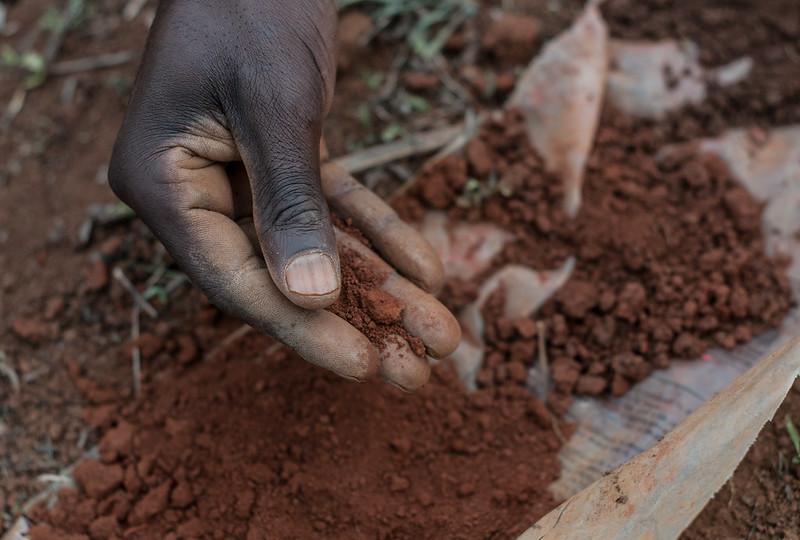
If there is clay soil in your lawn, compaction will occur at a higher rate.
The compaction of lawn soil is another issue that can cause the accumulation of water on the soil surface, creating a muddy yard. When there is tons of activity on your lawn, the tiny gaps between soil layers reduce, resulting in soil compaction. Water cannot seep through compacted soil, and it starts to accumulate on the surface of the lawn. The type of soil present in your yard can also worsen the compaction issue.
For instance, clay soil compacts at a higher rate than other soil types. Nonetheless, water stands on compacted soil making puddles. The weight of the water can also increase soil compaction very significantly in the long run.
6. Gutter Downspouts
A gutter system covering the drip edges of your house is an excellent investment, if properly maintained. However, in some cases, the downspouts get clogged, resulting in the accumulation of water inside the gutter trough. If not fixed in time, the gutter channel will fill up and overflow in your yard, creating a mess.
7. Concrete surfaces
A muddy yard can also form if there is a concrete surface such as a pavement blocking the flow of water in your yard. The same can also be true for paving stones, pebbles, and gravel that people might use to create pavements on their lawns.
Unfortunately, the only solution to this problem is to remove the concrete structure and move it to a better spot in your yard.
Muddy Yard Fixes
The first thing you need to do is identify the root problem of a muddy yard. Then, there are different ways you can fix a muddy yard. For instance, a temporary solution for restoring a muddy yard is to lay gravel or pine flakes to cover the mud.
However, installing a drainage system to remove rain runoff is a permanent solution that would help you in the long run. Nonetheless, here are a few ways measures that you can take to fix a muddy yard:
1. Building a French Drain

French drain lined with landscape fabric can help drain a muddy yard better.
If you have muddy spots in your lawn, you can try building a French drain to remove the excess water. A French drain is a ditch in the ground lined with landscape fabric and then partially filled with fine gravel. A French drain aims to divert water away from your yard or a muddy spot that is prone to flooding.
Alternatively, you can simply create a trench around the muddy areas; however, it is a temporary solution. If you want to fix your lawn’s flooding problem permanently, you should build French drains all around the yard. They will constantly drain the water away, and your grass and other plants can grow on top without any worries.
2. Establishing A Rain Garden
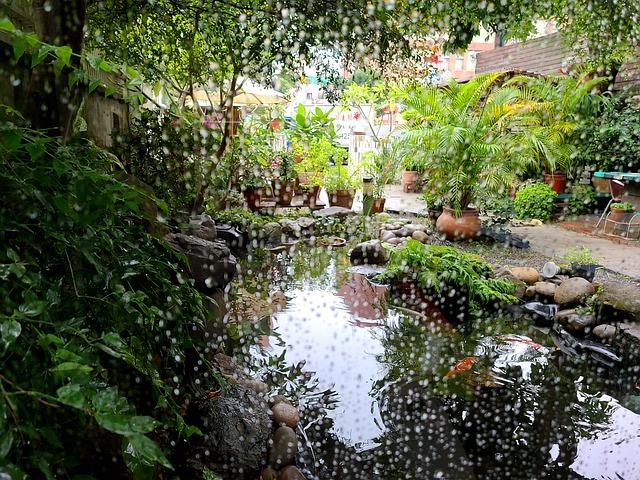
In certain muddy yard situations, establishing a rain garden is the wise thing to do.
Sometimes you just have to embrace a muddy yard. In such scenarios, you can try building a rain garden. In a rain garden, you grow water-tolerant plants that can grow in a puddle of water. However, you should only make a rain garden when the grass is too wet to support the grass. Also, you need to choose the spot for your garden carefully. It should be a place where excess water can quickly drain.
Moreover, a rain garden should be at least a few meters away from the foundations of your home. You also need to carefully monitor the rain garden as mosquitos and other insects thrive in still water. We suggest that you should grow the following plant species in case you establish a rain garden: blue vervain, goldenrod, swamp rose, and elderberry.
3. Planting a Hardy Ground Cover
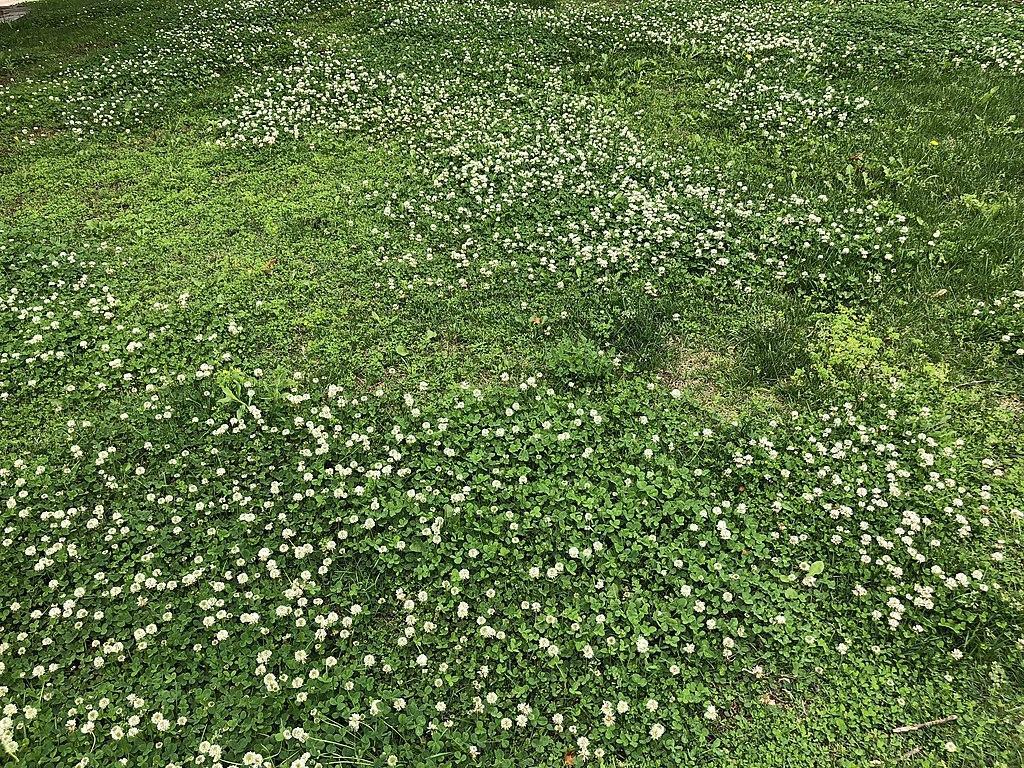
Clover plants can be used as a ground cover.
Sometimes, you can try planting a better ground cover to fix a muddy yard. For instance, if you have very active dogs or pets against which the soft grass does not stand a chance, you can try planting something tougher than grass. Irish moss, clover, and silver carpet are a few examples of such plants which can be used as a ground cover.
You can also try covering the surface of your lawn with creeper plants. Not only do these plants require minimal care, but once they grow, they bloom into colorful and pretty flowers. Examples of creeper plants also include clover and Irish moss. However, if they are not your type, you can try planting creeping thyme, blue star creeper, or winter creeper as well.
4. Adding Organic Material
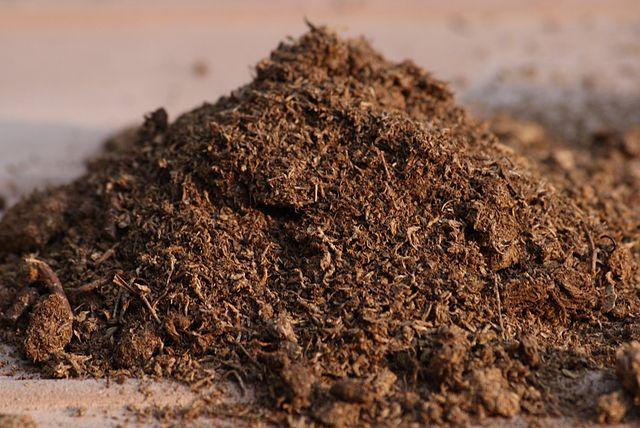
Peat moss can loosen up the soil, making it easier for the water to seep through.
Sometimes it is the topsoil that is not letting the water seep through. This causes the water to accumulate on the surface of the lawn, creating puddles and a mess. For instance, clay and other soils of a similar nature make it difficult for the water to seep through. In such cases, the best thing to do is add a material that will loosen the soil, making it easier for the water to seep through.
Some organic materials that you can use include peat moss, organic mulch, and sand. The clay soil loosens when you add sand to it. The problem is that these organic materials can ruin the chemistry of your soil. However, when done, you will have effectively gotten rid of a muddy mess, and the ground will be fully ready to grow grass.
5. Dethatching the Lawn
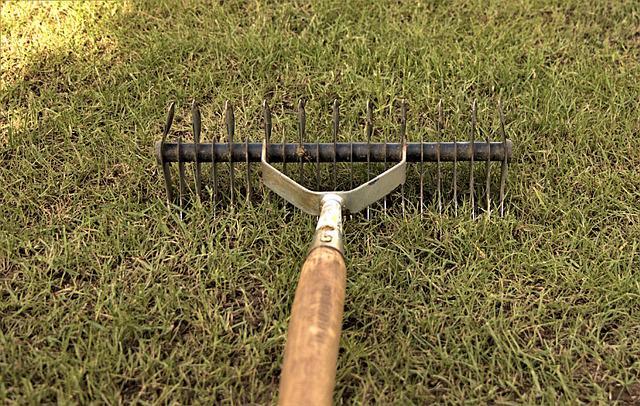
Rake your lawn regularly to remove thatch from the surface.
With time, dead grass accumulates over the lawn. After a while, it can make a layer between the green grass and the atmosphere. This layer is known as thatch, and it can make it difficult for the water to reach the ground, once it is around half an inch thick.
We suggest you dethatch your lawn at least once a year to prevent such a scenario. You can use a convex rake or a power rake for dethatching your yard. Moreover, you can also use a lawn aerator to dig holes in the soil for better aeration.
6. Overseeding The Lawn
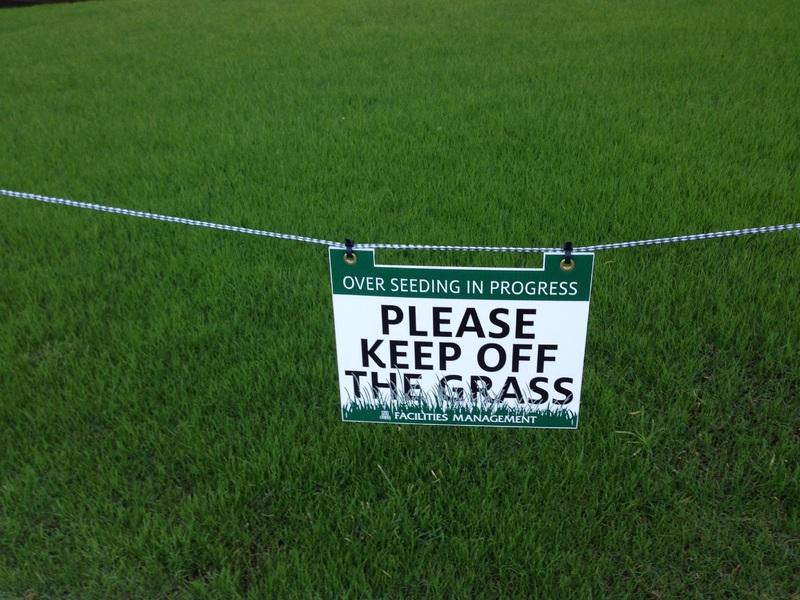
Overseeding can fix muddy spots in your lawn that form due to patchy turf.
Sometimes, when your lawn’s muddy spots are produced due to patchy turf, you can try overseeding your yard. The process consists of preparing the grass for overseeding, then spreading the grass seed. After that, you have to water the new grass until it is fully established.
Overseeding can also help you fix your lawn’s dog or pet trails problem as well. The pet trails form due to your pets running around in the same spots every now and then. Muddy areas can also arise when pets move around on the lawn during the rainy season.
However, you will need to make sure that your pets or dogs stay off the lawn for a while after overseeding.
7. Fixing Drainage Problems
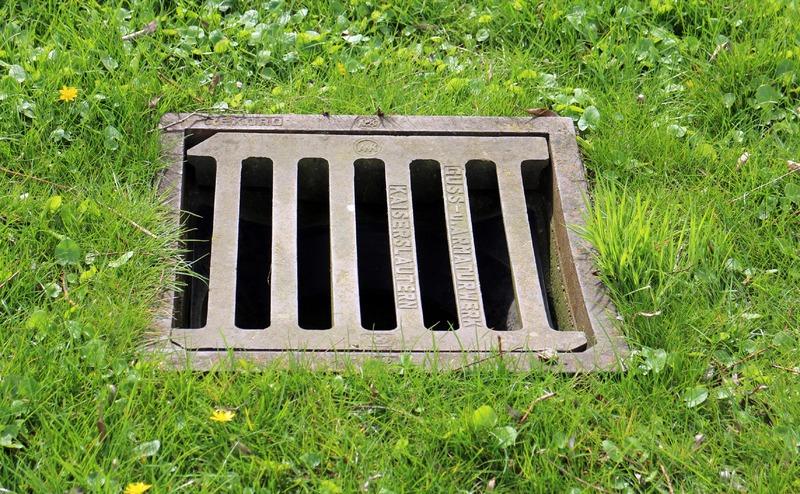
Fix drainage issues in your lawn to avoid a messy wet yard.
Blocked drainage pipes can also be another reason why the water is accumulating in the lawn. If you can identify which drainage pipe is causing the issue, it would be a simple fix to your muddy lawn. Similarly, downspouts can also cause your yard to become wet and soggy. Diverting their water or creating an effective drainage mechanism for roof water can also reduce the chances of having a muddy lawn.
If there are downspouts that empty water directly into the lawn, it is better to create water channels that take their water away from the yard. Too much water can also cause the grass in your yard to turn yellow. And with the proper slope, the water from downspouts should not be a problem in the lawn.
8. Laying Gravel to Cover Mud

Gravel not only fixes muddy spots in your yard, but it also looks aesthetically pleasing if laid with a sound plan.
Covering the lawn with gravel is another really great idea if you are frequently dealing with a muddy situation in your yard. We suggest you use pea gravel in your yard. It can tolerate high foot traffic and looks pleasing to the eye. Hence, it can add a nice aesthetic touch to your yard while also fixing the mud problem.
However, if there is too much mud in your yard, you should not use pea gravel alone on your lawn. It is because the dirt and gravel will mix together, creating an even more muddy mess. In such scenarios, we suggest you first lay out a foundation of crushed stones over which you can later add gravel. The stone foundation should not only be a few inches thick.
Gravel will not only help you to fix a muddy yard, but it can also prevent the soil from eroding. Also, gravel can also be used to fill up any low areas or holes in your yard.
9. Applying Pine Flakes
If you want to fix your lawn’s wet and soggy areas quickly, you cannot go wrong with pine flakes. Pine flakes rapidly suck up all the water, leaving behind dry soil. First, however, make sure that you use enough pine flakes to cover the surface entirely and then add a bit more just to add to it. After about a few hours, the chips will have absorbed all the water, and you are good to go.
However, keep in mind that it is only a temporary solution. If you are dealing with muddy yards constantly, you need to find a way to fix the muddy yard problem, once and for all.
10. Covering with Straw
Another temporary fix for dealing with a muddy yard is to use straws to cover the wet yard. It is especially useful after a rain or in case of emergencies when your lawn is wet. You can quickly cover the entire muddy surface with a bit of work. The straw can create a passage by covering the mud; however, it does not last long.
It is because the blowing wind can easily move the straw or hay, and once they get wet, it takes them very long to dry up. Nonetheless, it is a quick solution to your damp lawn problem, and straw also makes an excellent mulch.
Frequently Asked Questions (FAQs)
How do you fix a muddy yard fast?
The quickest and easiest way of fixing a muddy yard is to use hay, straw, pine shavings, or organic mulch. These materials will quickly dry up the mud to such an extent that you will be able to work on it. However, one thing you must not is that these materials only serve as a temporary fix. You will have to figure out the underlying cause behind the muddy lawn and fix it for a permanent fix.
How do you reseed a muddy lawn?
The first thing you need to do while reseeding a muddy lawn is to dry and aerate the soil as much as possible. After that, you can sprinkle the seed evenly over the surface and rake the soil. Then, keep watering the seed regularly and ensure that the seeds have all the nutrients needed to grow. And soon, you will once again have a yard filled with lush green grass.
What soaks up water in the yard?
A quick fix for soaking up the water in your lawn is adding manure, compost, peat, or any other suitable organic matter. It will not only soak up the water in your yard but, at the same time, it will also improve the fertility of your soil.
How do I dry up my yard?
One of the quickest and easiest ways to dry up a yard is using sand. Adding sand to muddy soil will speed up the drainage of water from the lawn and help it quickly dry up.
Sources for Further Reading
- Landscape Drainage for Homeowners. (2020). Retrieved 22 April 2022, from https://extension.illinois.edu/blogs/good-growing/2020-02-12-landscape-drainage-homeowners
- Wet Weather Lawn and Garden Maintenance. Retrieved 22 April 2022, from https://pitt.ces.ncsu.edu/2015/10/wet-weather-lawn-and-garden-maintenance/
- Turf and lawn tips during wet, cool weather. (2013). Retrieved 22 April 2022, from https://www.canr.msu.edu/news/turf_and_lawn_tips_during_wet_cool_weather
Now that you know how to fix your muddy yard, make sure to also check out our other articles:
Why Is My Grass Turning Yellow And How To Fix It Fast?
How To Get Bermuda Grass To Spread Fast | Bermuda Grass Lawn Care Tips
St. Augustine Grass Vs. Bermuda Grass: What’s The Difference And Which Is Better?







